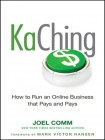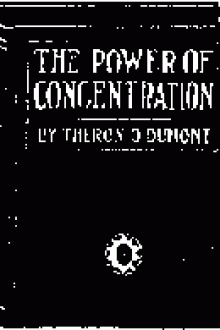KaChing: How to Run an Online Business that Pays and Pays Comm, Joel (books for 8th graders txt) 📖

Book online «KaChing: How to Run an Online Business that Pays and Pays Comm, Joel (books for 8th graders txt) 📖». Author Comm, Joel
The other tool is much more important—and much trickier to use. Kontera allows you to mark off certain areas of the page where the ads won’t appear. Place the line
<span name = KonaFilter>
before the text, and the tag
</span>
at the end, and you won’t receive any Kontera ads on that block of text. Clearly, that’s a useful way of keeping ads out of your navigation links (where users are unlikely to click on them and where they might interfere with easy browsing), but you can also use them to encourage Kontera to highlight some keywords rather than others.
If a high income on AdSense is all about blending the ad units into the page, on Kontera the loudest KaChing comes when the highest-paying keywords are highlighted on the most eye-catching parts of the page.
Kontera should do this automatically. It should pick out the keywords associated with the best ads. And it should start distributing the ads at the top of the page, spreading them out so that they aren’t all clustered at the end of the article where no one will see them. If you want to lend the system a hand by monitoring which keywords are most likely to be highlighted, tracking the amount of money those ads earn and making sure that those highlighted terms appear in short paragraphs and above the fold, then you should find that you get better results.
In practice, doing this for every page on your site could be a lot of work, so you’ll probably find yourself working with general principles rather than strategies for specific pages. For Kontera, those principles for loud KaChings include:
• Keeping the paragraphs short. Bringing up the toolbox breaks the reading flow. If users see a large block of text, they’ll want to reach the end before they start looking around for a diversion. Short paragraphs will allow the Kontera link to stand out in white space and provide plenty of natural breaks in which users can bring up the ad.
• Blocking out low-paying areas. If you can see that ads two-thirds of the way down the page rarely attract clicks, block off that area and keep the ads at the top and away from the navigation bars. It’s also a good idea to maintain a safe distance between a Kontera ad and a video unit: The video can block the toolbox.
• Tossing in high-paying keywords. There’s often more than one way to say the same thing, so if you can see that writing “iPod,” for example, brings up more effective ads than writing “MP3 player,” then use the specific term rather than the general. You’ll need to balance this with the need to keep the writing clear, but when you have a choice between two words with similar meanings and different ad values, you’ll know which to choose.
Kontera makes a very valuable addition to an AdSense-supported web site. The ads are different enough to provide an extra way to catch more users, and they’re simple enough to use to be able to paste, optimize, and forget.
I’ve arranged for my readers to receive priority treatment from the team at Kontera. Simply visit AdSense-Secrets.com/Kontera.html to apply.
CHITIKA PREMIUM ADS
When Chitika (www.chitika.com) launched its eMiniMalls back in 2005, I was impressed. They were packed with information. Each unit came with a little tab that, when you moused over, gave short reviews or pointed to sites that sold the product. You could see at a glance which outlet had the best price, and you could even scroll through the ad looking for similar items to buy. It was all very sophisticated and very clever. I had great results from them and so did many other Internet marketers.
But there were two problems.
The first was that the ads were really geared toward products. On a Web page that talked about a specific item, such as a computer model or a make of camera, Chitika would perform very well. The ad looked like a widget providing a summary of the main article. On a page that talked about anything else—your vacation adventures, for example, or what you think about health care reform—Chitika’s limited ad inventory meant that it was difficult to get relevant ads.
If you had a product site, then eMiniMalls were great. If you didn’t, you could safely ignore them.
The second problem was even more serious. Although an eMini-Mall placed on a product site generated lots of clicks—and plenty of CPC revenue for the publisher—it soon became clear that the ads weren’t doing a great deal for the advertisers. They were hearing a KaChing, but it was just the sound of the fee they had to pay every time someone clicked an ad. They weren’t getting the sales.
This is an important aspect of online advertising, and it’s something that’s often forgotten.
Users are valuable to advertisers only if they do something when they reach the advertiser’s site. Usually that means buying something, but it might also mean signing up for a newsletter—which will lead to future sales—or clicking an ad on their own site. Advertisers won’t want to continue paying for users if those users aren’t going to pay their way. That’s one of the reasons that Google introduced Smart Pricing back in 2005—and it was the problem that Chitika ran up against with the success of its eMiniMalls units.
Users just weren’t buying, and advertisers were growing unhappy. If the advertisers went away, then publishers already struggling with Chitika’s limited ad inventory would start going





Comments (0)